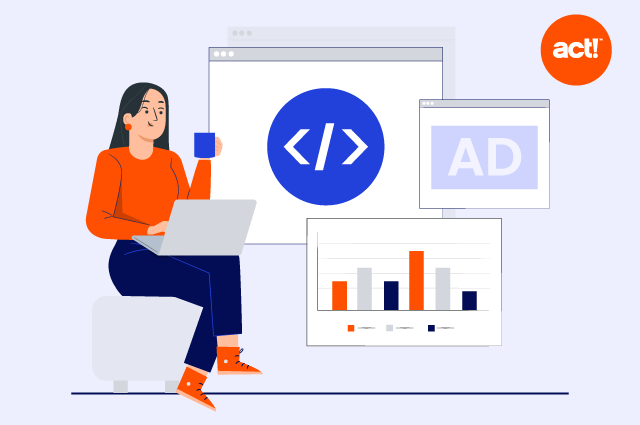
If you’re a small business owner, you know how important it is to get the right people to your website when it comes to making sales.
Just as important is what these users do when they arrive.
You can have all the visitors in the world but if they all click off your site soon after landing—instead of signing up for your offer—you won’t be any closer to making a sale.
Key then, is finding out both how people access your website and what they do when they get there.
Website tracking helps by showing you how people interact with your site. This allows you to make the changes you need to improve conversion.
What is Website Tracking?
Website tracking is when websites and platforms track web users. It is a wide term that encompasses a variety of different practices including tracking how users navigate the web as well as how they interact with specific pages or websites.
The practice is incredibly widespread. Common programs like Google Analytics, which is found on 87 percent of the world’s top websites, and Google Adsense, which is used by over 10 million sites worldwide, utilise tracking techniques. There are also many other tools that websites use to track users.
As a website owner, you can use tracking programs to find out a lot about information about users to your site. This information includes:
- IP addresses which can determine a user’s location or even the company they are visiting from.
- How the user behaves when they visit the website. For example, what they click on, their time on a page, or how many pages on the site they visit.
- Information about the user such as their demographics, interests, the device they are using to access your website, etc.
Websites can use this information in several different ways. Knowing about users can help publishers create targeted content and adverts, tracking how customers use websites can help sites optimise for conversion while knowing where and how users are visiting the site can help with marketing.
What are the Reasons for Website Tracking?
There are many reasons why you might want to track website visitors. Here are some of them.
Website Performance Tracking
Webmasters use tracking techniques to measure how their website and specific pages within the website perform.
Imagine you have a web page designed to encourage prospects to sign up to your mailing list. You could use website tracking techniques to discover if this is actually what people do when they visit your site and, if not, gain insight into how you can improve the chances of them doing so.
For example, you may have the sign-up form at the bottom of the page after a text introduction that discusses why the customer should sign up for the mailing list.
If your tracking tool tells you that many visitors aren’t spending long on the page it could suggest they aren’t reading the text. Therefore, you could either move the sign-up form higher up the page or change the text to make it more likely that the visitor will read all the way to the bottom.
eCommerce Sites
Likewise, eCommerce sites often track web users to optimise their sites for conversion. They may notice that some pages convert better than others. If this is the case, they can push users towards that page. Or, they can copy the strategy in use on that page onto other pages on their site.
Alternatively, they may use website tracking to help with marketing. If tracking statistics show that a website has a high conversion rate when customers arrive on the site from PPC advertising campaigns but a low conversion rate from social media, it could be a good idea to focus marketing spend on the more effective channel.
Profiling and Targeted Marketing
Another common use of website tracking is in targeted advertising. Many advertising platforms use cookies and other forms of tracking technology to track how users use the web and then show them adverts based on their interests.
One common type of targeting that you will almost certainly have come across while browsing the web is retargeting. This is when a website shows you adverts on other sites for a product you have already viewed.
This is why sometimes when you view, for example, a particular brand of shoe, adverts for the same shoe brand will continue to follow you around the web.

Website Tracking Technology
There are several technologies that websites use to track users. Here are some of them.
Cookies
Cookies are a common technology in use on websites. They are small files of data that a website downloads to your computer when you access it. The website or a third party can then access this cookie and use the information to provide a personalised experience.
Cookies are used to power advertising, analytics, and many of the common features you expect from a website. These include enabling sites to keep you logged in to a website, or tracking items you have added to a basked at an online store.
Pixel Tags
Pixel tags are transparent images made up of a single pixel on a webpage or an email. When the user loads content with a pixel tag the activity is tracked which can show marketers that the content was viewed or the email opened.
Fingerprinting
Fingerprinting is a type of tracking that uses the visitor’s “digital fingerprint” to track them as they browse the web.
A digital fingerprint is made up of information about the technology the user is accessing the website with. For example, the browser, operating system, time zone, and language. Put together, this information can be used to track an individual in a way that Mozilla says can successfully identify them 99 percent of the time.
How to Track Website Users
Google Analytics
There are many ways you can track users on your website. Perhaps the most common is with Google Analytics. This free tool provides almost unrivaled insight into how people are using your site. We have a full guide to using Google Analytics that you can access here.
Email Marketing Software
Email marketing software, such as that provided by Act!, can help track how users interact with your emails. This interaction can show you which leads are most interested in your product so you can prioritise communication with them. Find out more about our email tracking capabilities here.
Kissmetrics
Kissmetrics is a paid Google Analytics competitor that provides what it calls “advanced user-based insights.” It promises to provide website owners with the ability to further understand their customers and the way they behave.
Wrapping Up
Website tracking is a useful way to track the effectiveness of your site. One word of warning is that in the last few years, regulations such as GDPR in the EU and CCPA in California have been introduced that affect how businesses can collect data about their customers. If you have website visitors from areas affected, you should ensure that your website tracking efforts are compliant.





